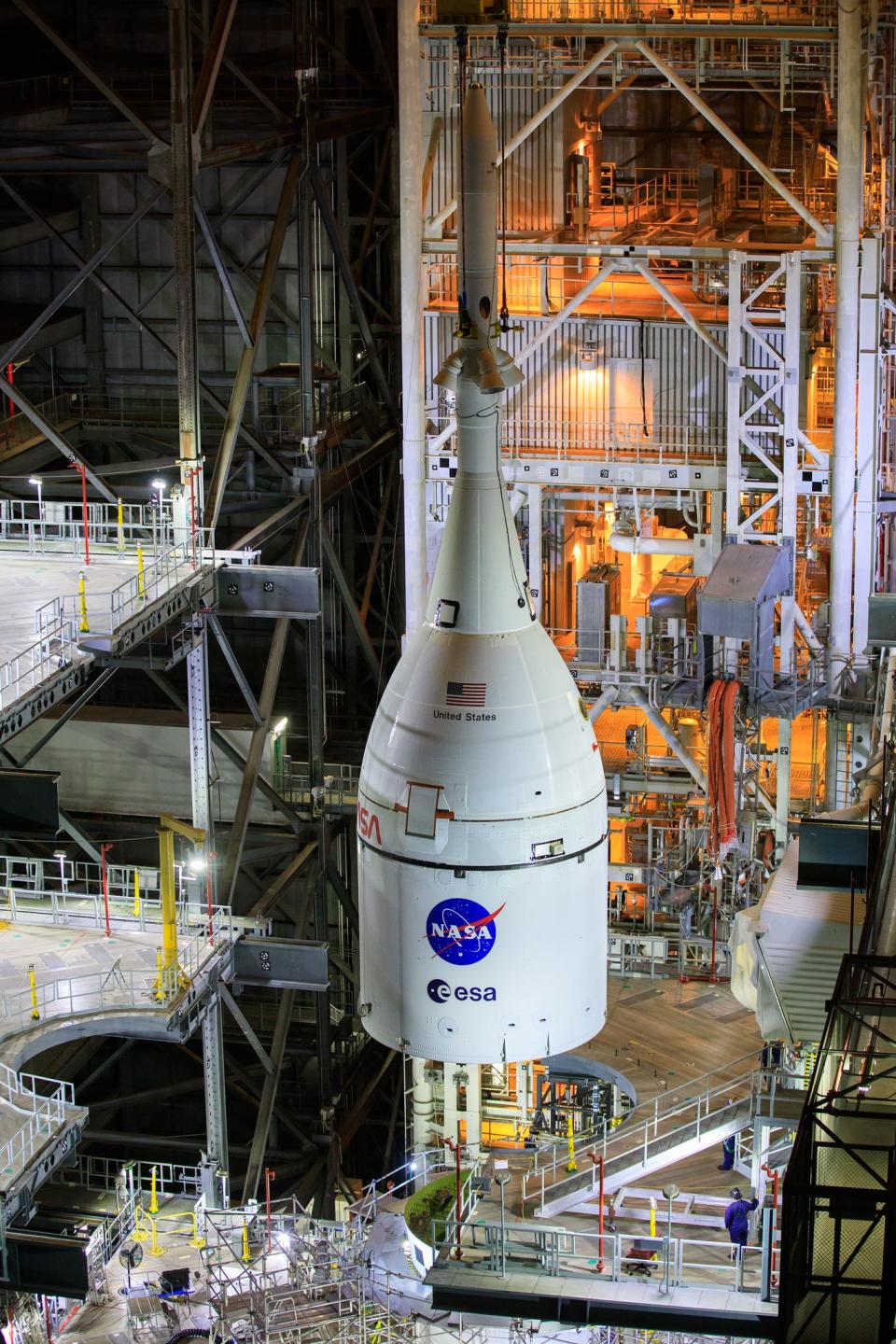NASA left its $50 billion moon rocket exposed to Hurricane Nicole's powerful winds
NASA left its Space Launch System (SLS) rocket on the launchpad during Hurricane Nicole.
The rocket sustained minor damage, and NASA still plans to launch it for the first time Wednesday.
It's risky to leave a rocket unsheltered on the Florida coast during a hurricane.
NASA left its prized new moon rocket exposed on its Florida launchpad as Hurricane Nicole battered the state with powerful winds.
The Space Launch System, or SLS, is 17 years — and an estimated $50 billion — in the making. NASA designed it to return astronauts to the moon for the first time since 1972 and to build a new permanent base on the lunar surface.
SLS hasn't flown yet. It has suffered setbacks all year from technical issues to weather, and now its launch is delayed again — from Monday, November 14, to Wednesday, November 16 — as NASA addresses "minor damage" from the hurricane.
One of the engine's rain covers was torn, an umbilical cord between the rocket and its Orion spacecraft came out of place, and some sealant was damaged around the spacecraft.

"Right now, there's nothing preventing us from getting to the 16th," Jim Free, an associate administrator at NASA, said during a briefing on Friday.
But it's unusual for NASA to leave such a valuable rocket out on the launchpad in the middle of a hurricane. There was no guarantee that winds or flooding wouldn't exceed the rocket's design limits. AccuWeather meteorologists warned ahead of the storm that there was a 60% chance windspeeds would exceed those limits.
"This entire situation raises serious questions about NASA's procedures for weather risk mitigation and preparation based upon available forecasts," Jonathan Porter, a senior meteorologist at AccuWeather, said in a statement.
NASA rolled the rocket out with a storm on the horizon

NASA rolled the rocket from its sheltered vehicle assembly building (VAB) to the launchpad on November 4, as the cyclone formed in the Atlantic Ocean. At the time, forecasts didn't show the storm getting strong enough to exceed NASA's safety constraints for the rocket.
"I think if we knew on the night before we were rolling out that it was going to be a hurricane, we probably would have stayed in the VAB," Free said.
As Nicole closed in, forecasts looked worse. But it takes several days to plan and execute a roll back to the VAB. By then, winds would be too strong to safely spend nine hours rolling the rocket back to the building. That's already a stress on the rocket's hardware. Add powerful winds, and NASA risks serious damage.
"We could not make it back to the VAB and be safe," Free said.
As it made landfall on Thursday, Nicole slammed SLS with powerful winds. Meters registered wind gusts of up to 100 mph near the top of the launchpad. None of this exceeded the rocket's design limits, according to Free.

"It is important to point out that the force of the wind increases exponentially, not linearly, so small increases in wind can result in substantial increases in damage potential," Porter said.
Free said NASA officials spent hours assessing and discussing the risks of leaving the rocket on the launchpad, versus rolling it back to the VAB. Ultimately, it seems the risk paid off.
Read the original article on Business Insider

